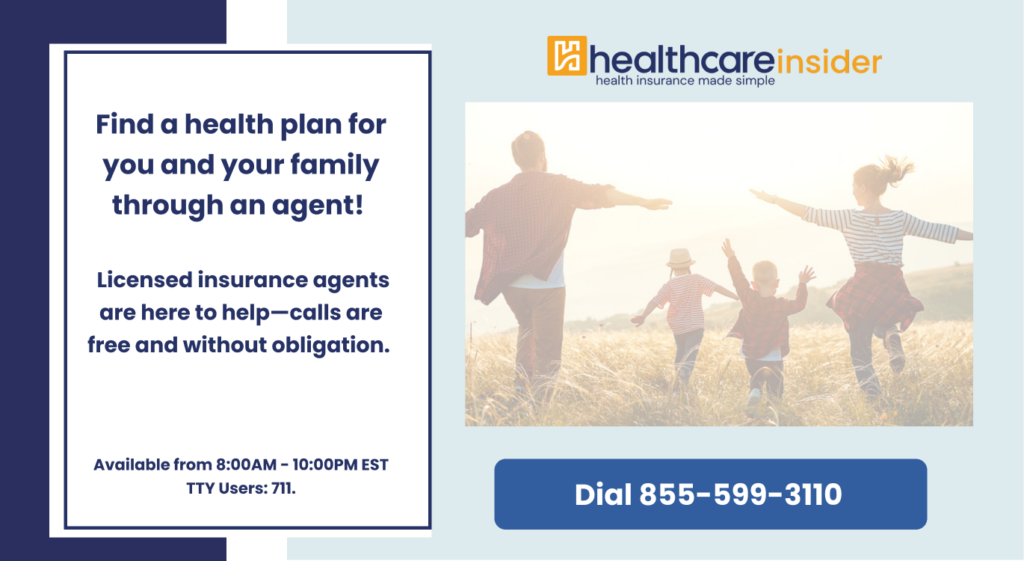ACA Eligibility Mistakes and Subsidy Repayment
Answer a few easy questions to calculate your ACA subsidy eligibility in seconds.*
ACA subsidies are based on an estimate of your future income, which often leads to inaccurate subsidy amounts due to the unpredictability of future earnings.
There’s no penalty for overestimating or underestimating your subsidy; any discrepancy will be adjusted in your tax refund or payment.
The IRS reconciles subsidies using Form 8962, and issues may arise if your income falls outside the 100%-400% federal poverty level range.
One of the weird quirks about Affordable Care Act health plans (also called ACA or Obamacare) is that most people don’t pay the full sticker price.
But if you overestimate your income for Obamacare, you may have to pay your government healthcare subsidy back.
Does that mean you should fear the subsidy? Not at all. If you can’t afford to pay your full ACA subsidy back, you generally won’t have to.
Subsidy Overpayment: A Common Problem
The Affordable Care Act virtually ensures that you won’t have an accurate subsidy. That’s because your ACA subsidy is determined by your best guess of your coming year’s annual income.
You can make an educated guess using last year’s income, but there’s no way to truly enter the correct amount in advance. After all, it’s impossible to know the future. It’s normal for most people to overestimate or underestimate their ACA premium tax credit by a small amount.
There’s no added penalty for taking extra subsidies. The difference will be reflected in your tax payment or refund.
(You can instead pay your monthly premiums in full, then receive your accurate subsidy in your tax refund. This is not common since there aren’t additional penalties for overpayment outside of very rare fraud cases.)
The IRS will reconcile subsidies – for better or worse – using Form 8962, “Advance Payments of the Premium Tax Credit”. You’ll submit this with your taxes if you or someone in your tax family received any subsidies.
ACA subsidies go to people who make between 100% and 400% of the federal poverty level. Subsidy corrections get trickier when you receive ACA subsidies but do not fall within this income level. This is when the IRS clawback becomes a potentially serious issue.
ACA Subsidy Repayment Caps for Fiscal Year 2024:
Repayment Limits for Advanced Premium Tax Credits, 2024 Tax Year
| Income as a percentage of the poverty line | Repayment limit for an individual | Income as a percentage ofpoverty line | Repayment limit for other taxpayers | Annual income of a family of four |
| Under 200% | Under $29,160 | $350 | Under $60,000 | $700 |
| Income as a percentage of the poverty line | $29,160 to $43,740 | $900 | $60,000 to $90,000 | $1,800 |
| At least 200% but less than 300% | $43,740 to $58,320 | $1,500 | $90,000 to $120,000 | $3,000 |
| 400% and above | $58,320 or more | None | $120,000 or more | None |
You can expect these guidelines to be similar, but not the same, for the taxes you pay in 2025 and beyond.
These general guidelines do not apply in a few special circumstances. If you are recently divorced, filing separate returns, sharing a plan between families, received subsidies from two different tax families during the year, did not receive a subsidy that you should have qualified for, or have other tax questions, then you’ll want to read IRS Form 8962 and accompanying Publication 974 closely to understand your special situation.
Subsidies and Lawful Immigrants Ineligible for Medicaid:
According to the IRS, “Certain aliens with household income below 100% of the federal poverty line are not eligible for Medicaid because of their immigration status. You may qualify for the PTC if your household income is less than 100% of the federal poverty line if you meet all of the following requirements:
- You or an individual in your tax family enrolled in a qualified health plan through a Marketplace.
- The enrolled individual is lawfully present in the United States and is not eligible for Medicaid because of immigration status.
- You otherwise qualify as an applicable taxpayer (except for the federal poverty line percentage).
What if You Overestimated Your Income for Obamacare Subsidies?
Editor’s note: As of 2022, the Inflation Reduction Act increased eligibility where the benchmark Silver plan costs no more than 8.5% of your annual household income, no matter how high that income is. The subsidies eventually drop off to nothing, but they taper off gradually now instead of ending when your income hits 400% FPL.
Lower Than 100% FPL: If your household is making $0 – or something close to it – you should probably apply for Medicaid right away. It’s essentially free health insurance.
If your income levels qualify you for Medicaid, don’t avoid it. Not only is it a bad idea to keep paying for ACA coverage – you’ll actually lose your subsidy, even if you would have gotten full ACA payment help by making a little more.
Fortunately, there are preset limits to how much you have to pay back, and you can also change plans at this time with ease. You need to call your federal or state Marketplace and let them know your income has changed. They can help you switch to Medicaid too.
While it’s also possible for some people to get $0 per month ACA health insurance with subsidies, you’d still have to pay coinsurance and copayments on ACA plans. These fees are not a part of Medicaid. Medicaid lasts for 1 year in most states, even if you get a job later.
This applies if you have lower than 138% FPL, if you live in an “expanded Medicaid” state.
More Than 100% FPL: Of course, making $0 is the worst-case scenario. If you simply overestimated your income, call your state or federal marketplace to adjust your subsidy.
What if you made 175% of the poverty level, but previously estimated that you made 140%? In any case, $325 is the maximum that the IRS is allowed to claw back in subsidies from a single person who makes less than $24,000 per year.
Just don’t start making $100,000 until next year, or else you’ll have to pay all the subsidies back!
If you live in an expanded Medicaid state, then this applies if you have greater than 138% FPL.
What if You Underestimated Your Income for Obamacare Subsidies?
More Than 400% FPL: If you received a subsidy that you make too much for, you may have to pay it back. Depending on how much you overestimated by, you may have to pay back the entire subsidy you received.
If you make nearly 400%+ of the federal poverty level, it’s extremely important to speak with an accountant to present your taxes in the most advantageous way.
If you underestimated your income, call your state or federal marketplace to adjust your subsidy. You can do this at any time of the year.
Less Than 400% FPL: You’ll make additional payments on your taxes if you underestimated your income, but still fall within the ACA subsidy range. Fortunately, subsidy clawback limits apply if you got extra subsidies but still made less than 400% of the federal poverty level. $1,400 is the maximum that a single filer in this situation would have to repay in 2022.
Summary
It’s generally a mistake to stay with Marketplace ACA coverage if you don’t get subsidies. If you make less than 100% of the FPL, then there are better programs available. If you make more than 400%, then you can get nearly identical ACA plans via non-government websites like Healthcare.com, and sometimes, the plan options are broader than what is available on the ACA Marketplace.
If you receive subsidies for Obamacare, always report significant income changes. Your taxes will catch up with you when it comes to penalties, but your health insurance may not catch up with regard to payment help.
If you do have a clawback – especially if you overestimated your income – your payment will probably just lower your tax return. You may not have to actually write a check.
No matter which way your income changes, it will likely open up a Special Enrollment Period for you to change plans without penalty.
Take advantage of ACA subsidies without fear. Calculate your subsidy online, or let Healthcare.com connect you with a locally-licensed agent today.


